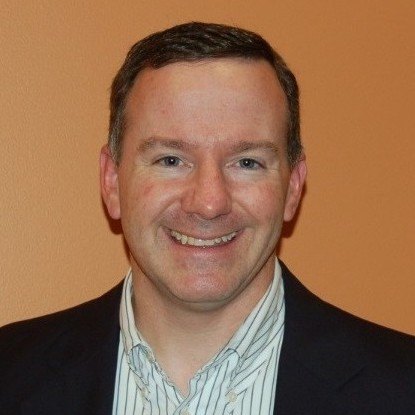When innovative financial services firm, Northern Trust, was planning its digital transformation strategy, it discovered that the right technology was only part of the puzzle.
The 130-year-old organization needed a holistic, secure technology platform that could make sense of its diverse data sets and the complex relationships between them. It required search and semantic capabilities that made data easier to uncover, link and understand.
But to be successful, it also needed a plan and a partner for “crossing the chasm” in technology adoption inside the organization. As a hub to most effectively unify data sources across the enterprise, MarkLogic was the natural choice.
Cultivating Support Inside a Complex Organization
In a presentation at MarkLogic World 2019, the Northern Trust team described the challenges and tactics they had used to overcome internal impedance to the organization’s digital transformation.
Mike Rogalski, Managing Architect, and Maureen Penzenik, Solutions Architect, saw echoes of Geoffrey Moore’s famous digital adoption chasm at Northern Trust. But instead of being at a provider level, the chasm was inside their organization— a gap in user comfort. Digital adoption was slowed by barriers including healthy skepticism, in-place investments, finite resources and organizational inertia, Mike said.
“Just as electricity powers our circuits and appliances and tooling, so does innovation power the forward momentum of our company. Just as a circuit will present resistance or impedance to a current, there are impedances in all our companies to the introduction of innovation,” he said.
The solution was to assess new technology in collaboration with a large number of staff and to break up a big decision into its constituent parts: functional, technical and commercial aspects and applications.
“For each one of those aspects, we ask ourselves four key questions: Does this work? Does it fit? Can we count on it? and What are the costs?” Mike said.
“By using this framework and approach, we are able to unpack the discrete criteria our stakeholders are telling us they would seek in a technology.”
Building Towards a Center of Excellence
To facilitate MarkLogic adoption, Northern Trust has created an internal community of practice in which project teams share best practices, proven architecture patterns, appropriate skill sets and centralized coordination of processes and standards. It has also established “office hours” with a MarkLogic solutions architect, which has proven to be very valuable in transferring knowledge and driving adoption. Now Northern Trust is working to build a Center of Excellence, which will set standards, guidelines and best practices for metadata, analytics tools and data integration guides.
Northern Trust Banks on NoSQL
The presenters shared with attendees their “technology radar,” which the organization uses to track and consider potentially useful emerging technologies. It was this radar that picked up MarkLogic as a fit in 2015.
Maureen said many initial projects used the data hub model because the concepts were familiar for those in charge of implementing the technology and because they could start small to show its benefits, then expand.
Since 2015, Northern Trust has implemented data hubs for a broad array of applications across the organization: trade and transfer agency transactions, product documents, asset management and wealth management.
“The data hub is a common use case for MarkLogic, and is evolving into a set of patterns and guidelines supported by MarkLogic for integrating data,” Maureen said.
“As the data hub continues to mature as part of the MarkLogic product, we are looking to broaden its use across application development teams.”
Northern Trust also needed a solution that could take care of its data logjam.
“Various teams who are interested in finding out more about MarkLogic need to store all kinds of logs—event logs, system logs, application request logs, transaction logs,” Maureen said.
“We found that MarkLogic has been a good solution for this because of its ability to store the semi-structured variable nature of logs and then to more easily search them than has been previously possible with other technologies.”
Enhancing the Language of Business with Semantic Triples
Another key benefit of MarkLogic was its ability to store complex relationships across a range of topics. Maureen said the company was looking to understand its data from a range of different perspectives, and felt that MarkLogic’s Resource Description Framework (RDF) triple store could be used to “bring this alive.”
“Documents allow you to store the entities, the RDF triples allow you to store the relationships and facts about those entities and finally, you’re able to put a relational view on top of that for creating the SQL tools,” she said.
In the future, Northern Trust plans to match the semantic capabilities of its data in MarkLogic to industry-recognized ontologies such as the Financial Industry Business Ontology (FIBO), Maureen said.
“FIBO is one of the industry ontologies that I think can really be leveraged by the use of document stores and RDF triples,” she said.
“This is really about the language of the business. Semantics can really come alive with these documents and the triple store. What I’m hoping we can do as a future exploratory use case is use a triple store and documents to map these ontologies.”
She said that when she compared the FIBO ontology to Northern Trust’s already established information architecture, there were parallels that could be matched in MarkLogic.
“We could perhaps use the FIBO ontology and the RDF triple store in MarkLogic to bring this alive. It is difficult, I’m not saying it’s trivial. The devil is in the detail and the data mapping, but perhaps there is a diamond in the rough here.”
Guidance for Internal Champions
The presenters had a set of guidelines for ensuring the success of digital transformation projects. These guidelines included:
- Seek out innovators and early adopters,
- Provide guidelines, frameworks and patterns,
- Make proof of concepts easy to initiate,
- Organize informal groups to socialize ideas,
- Use innovation to solve the hard problems and
- Choose a technology provider who will partner with you to cross the chasm.
Maureen said technology champions were very effective at bridging the gap across innovators and early adopters to push the project forward and ensure its success.
“The technology champions will emerge from the innovators and the early adopters naturally. They will introduce the new technologies for consideration and identify opportunities for initial use cases,” Maureen said.
“The technology champion can make connections to learning resources as well as to organize informal groups to further influence and strengthen the awareness of the new technology; and also a technology champion can become a sort of proof-of-concept ambassador and this helps other early adopters be able to easily kick-start the new technology and gain buy-in.”
Learn More
To hear why Northern Trust is developing its next-generation operating platform using the MarkLogic Data Hub to deliver real-time, event-based capabilities in a cloud-native environment, watch this interview with Len Hardy, SVP of Architecture and Innovation at Northern Trust.

Ed Downs
Ed Downs is responsible for customer solutions marketing at MarkLogic. He draws on his considerable experience, having delivered large-scale big data projects and operational and analytical solutions for public and private sector organizations, to drive awareness and accelerate adoption of the MarkLogic platform.

